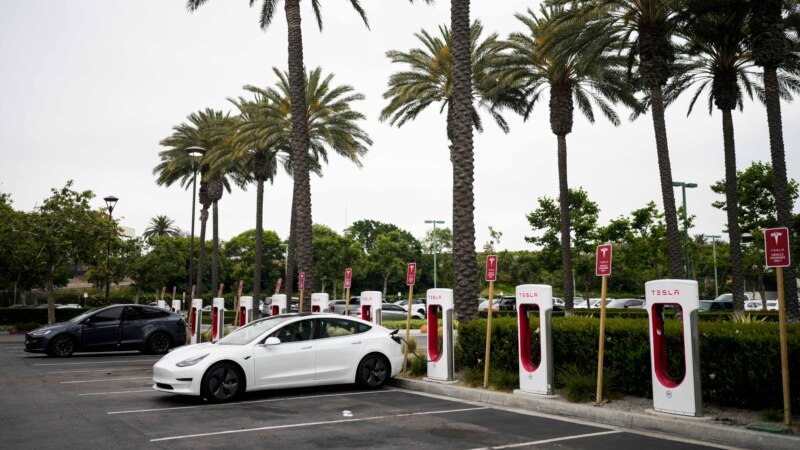
Biden administration unveils tough vehicle standards to accelerate electric transition
By Surja | Published | No Comments
President Joe Biden’s administration on Wednesday announced revised pollution standards for cars and trucks aimed at accelerating the U.S. auto industry’s shift to electrification to mitigate climate change.
The rule sets ambitious emissions reduction targets for 2032, but softens them from preliminary standards announced last April. After criticism from automakers, the final rule gives manufacturers more flexibility and relaxes the benchmark for the first three years.
The shifts were criticized as appeasing businesses by at least one environmental group, although the final rules won praise from other major NGOs focused on climate change.
The final rule — described by administration officials as “the most restrictive ever” and which could be rolled back if Republican Donald Trump defeats Biden in November — still requires increased sales throughout 2032. Fleet emissions are nearly 50% lower than in 2026 for electric vehicles (EVs) and low-emission vehicles.
The rules dovetail with other key Biden plans to build more electric vehicle charging stations and manufacturing facilities and incentivize electric vehicle sales, establishing the environment as a key differentiator in the 2024 presidential election.
Trump has derided climate change as a problem and cast the transition to electric vehicles as a job killer that would benefit China at the expense of American workers.
Biden believes U.S. automakers need to take the lead in the expanding market for electric vehicles.
“I rallied the American automakers. I rallied the American autoworkers,” Biden said in a statement. “Together we have made historic progress.”
Biden referred to the goal set three years ago that 50% of new cars would be electric by 2030, and he predicted we would hit that 2030 goal and continue to move forward in the coming years. “
Electric vehicles will account for 7.6% of sales in 2023, up from 5.9% in 2022, according to Cox Automotive.
The original proposal envisioned electric vehicles’ share of new car sales soaring to 67% by 2032.
Automakers, which are investing billions of dollars in a massive effort to build more electric vehicle production capacity, criticized the initial standards as too stringent. They point to limited U.S. charging capacity, dampening consumer demand, and difficulties in supplying metals and other raw materials for electric vehicle batteries.
Biden administration officials decided to allow “multiple paths” for manufacturers to meet the standards after hearing from the auto industry, organized labor and auto dealers, a senior Biden administration official said Tuesday.
That path could include a combination of electric vehicles, conventional but more fuel-efficient engines and plug-in hybrids, which have seen a recent rise in demand.
Biden administration officials have chosen to relax year-to-year emissions improvements between 2027 and 2030 while maintaining the same target through 2032.
John Bozzella, president of the Alliance for Automotive Innovation, a Washington lobbying group representing automakers, said adjusting the goals for the first three years “is the right thing to do.”
“These adjusted EV targets – which are still a stretch target – should give the market and supply chain a chance to catch up,” Bozzella said, adding that the extra time would allow more EVs to be charged. The station is online.
The final standard sets a fleet-wide CO2 emissions target of 85 grams in 2032, down from 170 grams in 2027, according to a government fact sheet.
Wednesday’s move drew praise from major environmental groups including the Sierra Club and NRDC, which said the new rules “lead us in the right direction,” according to a statement from NRDC chief Manish Bapna .
But Dan Becker, climate transportation campaign director at the Center for Biological Diversity, criticized the adjusted rules as “significantly weaker.”
“The EPA bowed to pressure from Big Car, Big Oil and auto dealers and filled the program with enough loopholes to allow the Ford F150 to pass,” Becker said.
“Weaker rules mean cars and pickup trucks emit more pollution, oil companies continue to pump oil into consumers, and automakers continue to employ skilled delaying tactics.”
Follow us on Google news ,Twitter , and Join Whatsapp Group of thelocalreport.in






